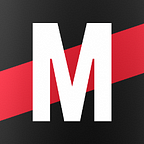Tokyo Trash
Sorting out the waste stream in Tokyo, Matthew Amster-Burton explains, is a complicated matter.
Seattle food writer and regular The Magazine contributor Matthew Amster-Burton spent a summer with his family in Tokyo. In his book, Pretty Good Number One: An American Family Eats Tokyo, he tells unexpected stories of food and life in the world’s biggest city. Here’s one of them.
In Tokyo, there are five main categories of trash, with multiple subcategories and exceptions. Each category is collected only on certain days. The apartment manager puts out the proper cans on the proper days, and if you don’t take the stuff out in time, it’s like missing a ferry, only smellier.
The catchall category is Combustible waste, meaning stuff that should go to the incinerator: food scraps, nonrecyclable plastic, diapers, small yard waste (“pruned brunches,” according to the guide). The existence of this category led to many iterations of the following conversation:
Matthew: Is this Combustible?
Laurie: No, I think it’s Plastic.
Matthew: Everything is combustible if you get it hot enough. That’s just physics.
Plastic is not just any plastic. It has to be recyclable and clean without food stains. It is your responsibility as a citizen to make a good-faith effort to wash food residues (say, takoyaki grease) off the plastic before putting it in the Plastic bin. It took me a couple of weeks to realize that there’s a Plastic recycling symbol. It looks like the first two syllables of “purasuchikku” written in katakana. You’re welcome.
Oh, but wait. Not all plastic is Plastic. PET bottles go in a separate bin and are collected on a separate day. Summer in Tokyo is high season for drink vending machines, which are so common it’s as if they’re following you. Don’t tell any of our environmentally sensitive friends in Seattle, but we probably went through 250 PET bottles over the course of the month. There’s more than one way to recycle a PET bottle: our friend Akira built a raft out of them.
Paper is the worst. You’re supposed to bundle your newspapers and then slip small pieces of paper (shopping lists, unwanted love notes) in between the newspapers. These parcels are then tied up and placed at group collection points for collection by “voluntary community groups.” Laurie somehow figured out not only where and when to put out Paper, but also which type of string to bind it with. I asked her how she did this, because it seemed like sorcery. “I figured it out by watching the streets,” she replied, which is exactly how I learned to rap.
Thermal receipt paper goes in Combustibles, not Paper. No transaction in Tokyo is finished without a receipt. I would not be at all surprised to learn that hookers give receipts.
Noncombustibles are mainly metal things. By keeping an eye out for the Plastic symbol, I learned just how many things in life appear to be metal but are actually plastic. This struck me as deeply metaphorical.
Is there more to it than this? you might be wondering. Oh yes, there is. Page 3 of the handout (you are referring to your handout, right?) displays a massive chart of Frequently Asked Items. Some are easy. Aluminum foil? Noncombustible. Stuffed doll 30cm or smaller (Beanie Babies)? Combustible. Larger than 30cm (Cabbage Patch Kids)? Special large item pickup; call ahead.
The frequently asked list has 112 items. One of them, and this is not a joke, is sphygmomanometer. If you must know, it’s Noncombustible but must be put in a separate bag and labeled. Do you know how to say sphygmomanometer in Japanese? I barely know how to say it in English.
Pretty Good Number One is available in ebook and paperback from Amazon and many other bookstores. Matthew is a regular contributor to The Magazine. You can hear him read part of the book in this audio from Lit Crawl 2013 in Seattle, along with two other Magazine folks.
